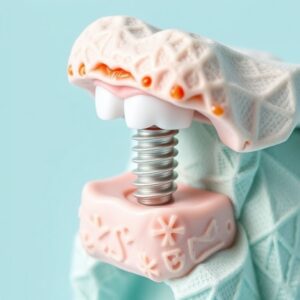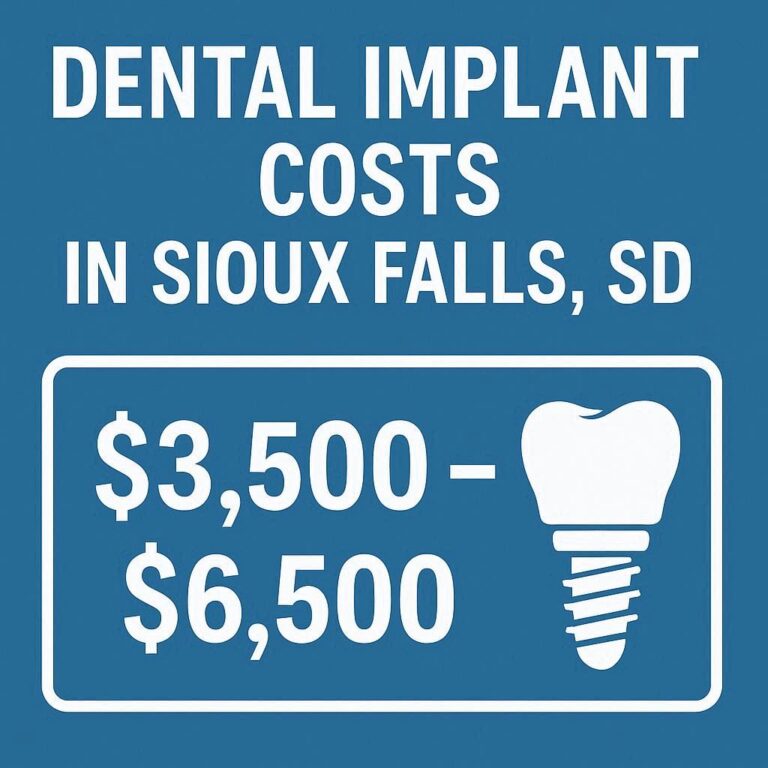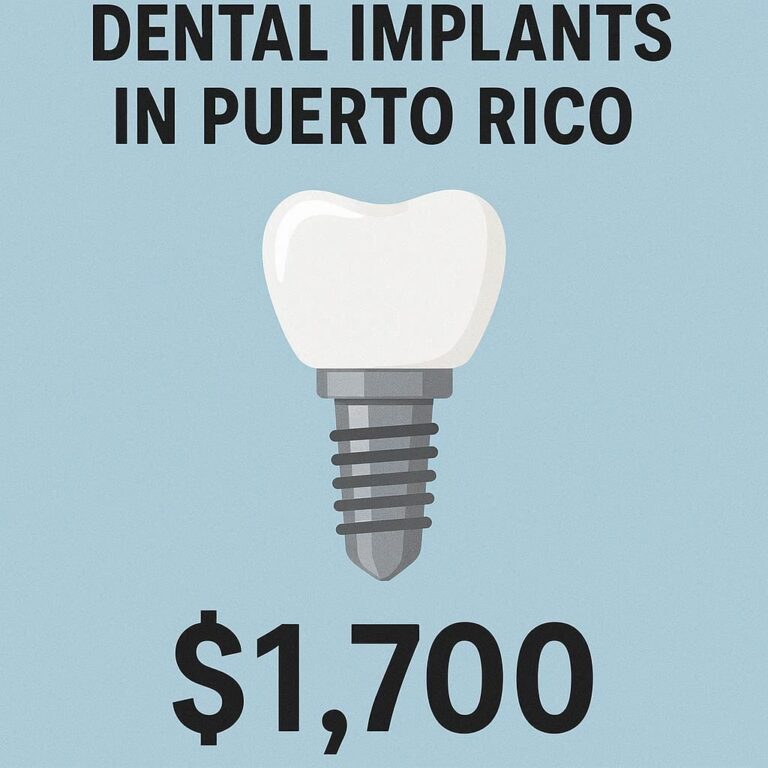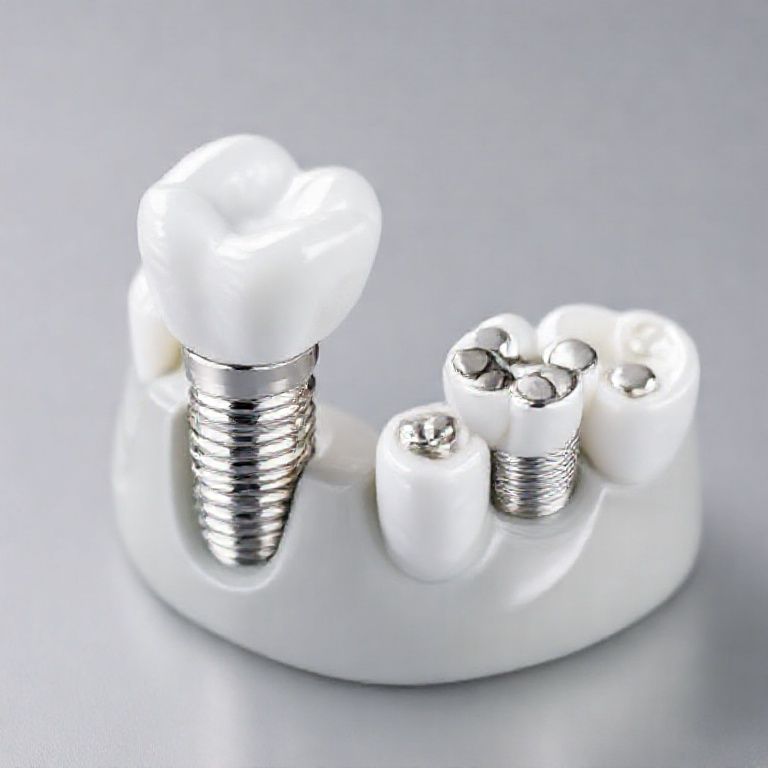The Ultimate Guide to Dental Implant Costs in Panama
Imagine the sensation of biting into a crisp apple without a second thought. The confidence of laughing unabashedly in a photograph, revealing a full, radiant smile. For millions, this simple joy is eroded by missing teeth, dentures that slip, or bridges that compromise healthy tooth structure. The solution, long heralded as the gold standard in tooth replacement, is the dental implant. Yet, for many in North America and Europe, the staggering cost—often reaching tens of thousands of dollars for a full arch—places this life-changing treatment firmly out of reach. This financial barrier has given rise to a powerful global phenomenon: dental tourism. And at the forefront of this movement, a tiny nation is making an enormous impact: Panama.
Panama is not merely a destination for affordable dental work; it is a hub of world-class medical excellence. This country has strategically positioned itself as the “Hub of the Americas,” attracting top-tier dental talent trained in the United States and Europe. These professionals operate in state-of-the-art clinics equipped with technology that rivals, and sometimes surpasses, what you would find in many first-world countries. But the true magic of Panama lies in its powerful value proposition: it offers North American-level quality at a fraction of the cost, all set against a backdrop of tropical rainforests, pristine beaches, and a modern, vibrant capital city. This article is not just a cost list; it is a deep dive into the entire ecosystem of getting dental implants in Panama. We will dissect every component of the price, guide you through the process of selecting a world-class clinic, and show you how to transform a necessary medical procedure into the vacation of a lifetime. Prepare to discover why Panama is the intelligent choice for anyone seeking to restore their smile, their function, and their confidence without compromising on quality or financial stability.

2. Understanding the Dental Implant: The Foundation of a Modern Smile
Before we delve into costs, it is imperative to understand what a dental implant truly is. Many patients arrive with the misconception that an implant is a single, pre-fabricated tooth that is simply screwed into the jaw. The reality is far more sophisticated and explains why the procedure commands its price.
A dental implant is a permanent, biocompatible replacement for a missing tooth’s root. It is a multi-component system designed to fuse with your living bone, a process known as osseointegration, creating a stable and enduring foundation for your new tooth. The system consists of three primary parts:
-
The Implant Fixture: This is the screw-like, titanium or zirconia post that is surgically placed into the jawbone. It acts as the artificial root. Titanium is the most common material due to its exceptional biocompatibility and strength.
-
The Abutment: This is a connector piece that is attached to the top of the implant fixture after it has healed and fused with the bone. It protrudes slightly above the gum line and serves as the anchor for the final prosthetic tooth.
-
The Prosthesis (Crown, Bridge, or Denture): This is the visible part of the tooth, custom-made from high-strength, tooth-colored materials like porcelain or zirconia to match the shape, size, and color of your natural teeth. For a single tooth, this is a crown. For multiple teeth, it can be a bridge or an implant-supported overdenture.
This tripartite structure is what gives a dental implant its unparalleled stability and function. Unlike a traditional bridge, which requires grinding down adjacent healthy teeth, an implant stands independently, preserving your natural dental anatomy. Unlike dentures, it does not slip, click, or cause bone loss; in fact, it stimulates the jawbone, preventing the facial collapse often associated with long-term tooth loss. Understanding this complexity is the first step in appreciating the value you receive, both in Panama and elsewhere.
3. The Complete Breakdown: What Factors Influence the Cost of a Dental Implant in Panama?
The question “How much does a dental implant cost in Panama?” is akin to asking “How much does a car cost?” The answer depends on a multitude of factors. A single, all-inclusive price is a myth. To become an informed consumer, you must understand the variables that contribute to the final invoice. Here is a detailed breakdown.
3.1. The Implant Fixture Itself: Brand and Material Matters
Not all implants are created equal. The global dental market is filled with hundreds of implant brands, ranging from premium, research-driven giants to more economical generic brands.
-
Premium Brands (e.g., Straumann® (Switzerland), Nobel Biocare® (Switzerland), Zimmer Biomet® (USA)): These are the “Mercedes-Benz” of the implant world. They come with decades of clinical research, proven long-term success rates, and sophisticated surface technologies that promote faster and more predictable osseointegration. They also have robust worldwide warranty systems and a vast inventory of compatible parts, which is crucial for future repairs. In Panama, a premium brand implant fixture will be at the higher end of the cost spectrum, but you are paying for proven reliability and a global safety net.
-
Mid-Range and Value Brands: Many excellent Korean and European brands (e.g., Osstem®, Megagen®, Bego®) offer outstanding quality and advanced surfaces at a more accessible price point. These are often the workhorses of high-volume, quality-focused clinics and provide an excellent balance of cost and performance.
-
Material: While titanium remains the standard, zirconia implants are gaining popularity as a metal-free, highly aesthetic alternative, especially for front teeth. They are typically more expensive than their titanium counterparts.
In Panama, you will find that reputable clinics almost exclusively use premium or high-quality mid-range brands. The cost savings do not come from using subpar components, but from lower operational costs.
3.2. The Abutment: The Crucial Connector
The abutment can be standard (stock) or custom-milled. A custom abutment, fabricated using CAD/CAM technology to perfectly fit the unique contours of your gum tissue and implant position, offers superior aesthetics and gum health. It is more expensive than a stock abutment but is often worth the investment, especially for visible teeth.
3.3. The Dental Crown: The Visible Masterpiece
The crown is what the world sees, and the material choices significantly impact the price and aesthetics.
-
Porcelain-Fused-to-Metal (PFM): A durable and historically common option, but the metal substructure can create a grey line at the gumline over time, compromising aesthetics.
-
Full-Cast Gold: Extremely durable and biocompatible, but its gold color makes it unsuitable for visible areas.
-
All-Ceramic / All-Porcelain (e.g., E.max): Offers the most natural aesthetics, mimicking the light-transmitting properties of natural tooth enamel. It is highly durable and is the material of choice for front teeth and for patients with high aesthetic demands.
-
Zirconia: Incredibly strong and durable, making it ideal for back teeth. Modern monolithic zirconia crowns also offer very good aesthetics, though some argue they can be slightly less translucent than the best all-ceramic options.
In Panama, you will commonly be offered high-quality E.max or zirconia crowns as standard, often at a price equivalent to a PFM crown in the U.S.
3.4. Diagnostic and Preparatory Procedures: The Blueprint for Success
A successful implant journey begins with comprehensive diagnostics. This is non-negotiable. A reputable clinic will never skip this step.
-
Consultation and Examination: The initial clinical assessment.
-
3D Cone Beam CT Scan: This is the gold standard. Unlike a traditional 2D X-ray, a CBCT scan provides a three-dimensional view of your jawbone, revealing bone density, quantity, and the precise location of nerves and sinuses. This is critical for safe and accurate surgical planning. Its cost is typically included in the surgical fee or quoted separately.
-
Preparatory Procedures: Many patients require additional work before an implant can be placed.
-
Tooth Extraction: Simple or surgical.
-
Bone Grafting: If you have insufficient jawbone due to long-term tooth loss or periodontal disease, a bone graft may be necessary to create a stable foundation for the implant. This adds significant cost and healing time (several months).
-
Sinus Lift: A specialized bone graft for the upper jaw, particularly in the molar and premolar region, where the sinus cavity can encroach on the available bone.
-
Gum Disease Treatment: Active periodontal disease must be controlled before implant surgery.
-
3.5. The Surgeon’s Expertise: You’re Paying for Skill and Experience
The skill of the dental implantologist is the single most critical factor in the long-term success of your procedure. A surgeon who is a specialist in periodontics or oral and maxillofacial surgery, with years of additional training and thousands of successful cases, will command higher fees than a general dentist who also places implants. In Panama, you have access to U.S.-board certified specialists whose fees, while higher than a generalist’s, are still dramatically lower than their counterparts in the United States. This is where you should never compromise.
3.6. Geographic Location and Clinic Overheads in Panama
A clinic in the heart of Panama City’s financial district, with marble floors and panoramic views, will have higher overheads than a smaller, equally proficient clinic in a suburb or in the highland town of Boquete. These overheads are reflected in the pricing. However, even the most luxurious clinics in Panama City offer prices that are 50-70% lower than in the U.S.
3.7. Complexity of Your Specific Case
A straightforward single tooth replacement in the front of a healthy mouth with ample bone is at the lower end of the cost spectrum. A complex case involving multiple extractions, significant bone grafting, full arch reconstructions (like All-on-4® or All-on-6), or the need for sedation anesthesia will be at the higher end.
4. A Detailed Cost Table: From Single Tooth to Full Mouth Reconstruction
The following table provides a realistic range of costs for common dental implant procedures in Panama as of 2025. These are estimates for all-inclusive treatment at high-quality clinics. Always get a detailed, written treatment plan and quote.
| Procedure | Description | Estimated Cost Range (USD) in Panama | Comparable U.S. Cost (USD) | Potential Savings |
|---|---|---|---|---|
| Single Dental Implant | Includes implant fixture (premium brand), abutment, and an E.max or Zirconia crown. Excludes potential bone graft. | $1,500 – $2,800 | $3,500 – $6,000+ | 50-60% |
| Implant-Supported Bridge (3 units on 2 implants) | Replaces three missing teeth using two implants as supports. | $3,800 – $6,500 | $7,000 – $12,000+ | 45-55% |
| All-on-4® Full Arch | A full set of teeth (upper or lower) permanently fixed on four strategically placed implants. Includes temporary and final prosthetic. | $12,000 – $18,000 per arch | $25,000 – $40,000+ per arch | 50-60% |
| All-on-6® Full Arch | Similar to All-on-4 but uses six implants for increased stability, often recommended for cases with less bone density. | $14,000 – $22,000 per arch | $28,000 – $45,000+ per arch | 50-60% |
| Bone Grafting | Per site, if required. Cost varies significantly with the size and type of graft material. | $400 – $1,200 | $800 – $3,000+ | 50-60% |
| Sinus Lift | A specialized bone graft for the upper jaw. | $800 – $1,800 | $1,500 – $3,500+ | 45-50% |
| Full Mouth Reconstruction (Upper & Lower) | Combining two full-arch procedures (e.g., All-on-4/6 on both jaws). Comprehensive package. | $25,000 – $40,000 | $60,000 – $90,000+ | 50-65% |
Table 1: Comparative Cost Analysis of Dental Implant Procedures in Panama vs. the United States (2025 Estimates).
5. The Step-by-Step Journey: What Does the Dental Implant Procedure in Panama Entail?
Understanding the timeline and steps involved demystifies the process and helps you plan your trip effectively.
-
Stage 1: Virtual Consultation (Pre-Travel). You contact a chosen clinic, provide your medical/dental history and any recent X-rays. A preliminary video consultation is scheduled to discuss your goals and provide a rough estimate.
-
Stage 2: In-Person Consultation & Advanced Diagnostics (Day 1-2 in Panama). Upon arrival, you have a comprehensive clinical exam, and a 3D CBCT scan is taken. The surgeon analyzes the data and presents a final, detailed treatment plan and cost.
-
Stage 3: Preparatory Work (If Needed, Day 2-3). This may include extractions, bone grafting, or periodontal treatment. If only a bone graft is done, you will typically return home to heal for 4-6 months before the implant placement trip.
-
Stage 4: Implant Surgery (Day 2-4). Under local anesthesia (or sedation), the implant fixtures are surgically placed into the jawbone. The gums are sutured closed. For immediate-load protocols like All-on-4, a temporary set of teeth is attached on the same day.
-
Stage 5: Healing & Osseointegration (3-6 Months). This is the most critical waiting period. The implant integrates with the jawbone. You return home during this phase. For simple cases, some clinics offer one-stage implants where a healing abutment is placed and no second surgery is needed.
-
Stage 6: Abutment Placement & Final Impressions (Return Trip). After healing, you return to Panama. The surgeon re-opens the gum (if a two-stage implant was used) and places the abutment. Impressions or digital scans are taken of the abutments to fabricate your final, permanent crowns or bridge.
-
Stage 7: Delivery of Final Prosthesis (A Few Days Later). The final, custom-crafted teeth are securely attached to the abutments. The fit, bite, and aesthetics are meticulously checked.
-
Stage 8: Follow-up Care. You receive detailed instructions for home care and schedule follow-up appointments with your local dentist to monitor the implants.
6. Panama vs. The World: A Cost Comparison That Will Astonish You
The savings in Panama are not just incremental; they are transformative. As the table above illustrates, patients routinely save 50% to 65% on complex procedures. But how does Panama stack up against other popular dental tourism destinations?
-
Panama vs. Mexico: Mexico (particularly Los Algodones) is a major player. Prices can be slightly lower than Panama in some border clinics. However, Panama is often perceived as offering a higher standard of overall infrastructure, safety, and English-language proficiency in its top clinics. It appeals to patients seeking a more comprehensive, resort-like medical travel experience.
-
Panama vs. Costa Rica: Costa Rica is a well-established and excellent destination. Costs are very similar to Panama, making the choice often one of personal preference regarding the country, specific clinic, and surgeon.
-
Panama vs. Hungary/Thailand: For Europeans, Hungary is a prime destination; for Australians and those in the West, Thailand is a classic choice. The primary advantage Panama holds is proximity and ease of travel for North Americans, with short, direct flights from many major U.S. and Canadian cities and no significant jet lag.
Panama’s unique selling proposition is its combination of geographic convenience, first-world infrastructure, political stability, use of U.S. currency, and a concentration of U.S.-trained dentists. It is a “best of all worlds” scenario.
7. Choosing the Right Dental Clinic in Panama: A Curated Guide
Your choice of clinic and surgeon is paramount. Here are the non-negotiable criteria for your selection process:
-
Surgeon Credentials: Look for specialists (Periodontists, Oral Surgeons) with verifiable training from recognized institutions, preferably in the U.S. or Europe. Check for membership in international academies like the International Congress of Oral Implantologists (ICOI).
-
Technology: The clinic must have an in-house CBCT scanner, CAD/CAM technology for same-day crowns/abutments, and digital impression systems.
-
Before and After Portfolio: A reputable clinic will have an extensive gallery of actual patient cases.
-
Patient Testimonials and Reviews: Read independent reviews on platforms like Google, Facebook, and dedicated medical tourism sites.
-
Communication: The clinic should be responsive, provide clear information in English, and offer a transparent, written treatment plan and contract.
-
Accreditation: While not as common, some clinics seek international accreditation, which is a strong indicator of quality and safety protocols.
7.1. Spotlight on Panama City’s Premier Implant Centers
Panama City is home to dozens of excellent clinics. While we cannot list them all, the top tier are characterized by their investment in technology and specialist staff. They are often located in the upscale neighborhoods of Punta Pacífica, Obarrio, or the Banking District. These clinics are accustomed to an international clientele and provide seamless service, from airport pickup to hotel arrangements.
7.2. The Boquete Advantage: High-Altitude Dental Excellence
Nestled in the highlands, the town of Boquete has emerged as a surprising epicenter for world-class dental care. Several highly qualified American and Panamanian dentists have set up practices here, attracted by the tranquil climate and quality of life. The model in Boquete is often more intimate and personalized. The cost of living is lower than in the capital, which can translate to slightly lower prices for the same quality of care. For patients seeking a quieter, more recuperative environment, Boquete is an exceptional option.
8. The Dental Tourism Experience: Blending World-Class Care with Unforgettable Vacation
This is the part where necessity transforms into adventure. Your dental trip to Panama can be a truly rejuvenating experience.
8.1. Planning Your Trip: Travel, Accommodation, and Logistics
-
Flights: Tocumen International Airport (PTY) is a major hub with direct flights from over 20 U.S. cities.
-
Visa: Most Western nationals do not require a visa for tourist stays of up to 180 days.
-
Currency: The official currency is the Panamanian Balboa, which is pegged 1:1 with the U.S. Dollar. U.S. dollars are used as legal tender everywhere. This eliminates exchange rate hassles for American patients.
-
Accommodation: From luxury high-rises like the Waldorf Astoria and W Hotel in Panama City to charming bed-and-breakfasts in Boquete, there is an option for every budget. Many clinics have partnerships with nearby hotels for discounted rates.
8.2. What to Expect During Your Consultation and Treatment
The best clinics treat you as a valued guest. You will be assigned a patient coordinator who manages your schedule, transportation, and any questions. The clinical environment will be immaculate, professional, and reassuring. The surgeons will take ample time to explain every detail, ensuring you are comfortable and informed at every step.
9. Navigating Risks and Ensuring Success: Your Safety is Paramount
As with any medical travel, risks exist. The key is to mitigate them through diligent research.
-
The “Too Good to Be True” Price: Extremely low prices are a major red flag, often indicating the use of inferior materials or inexperienced practitioners.
-
Insufficient Planning: Rushing a complex procedure is dangerous. Ensure your clinic builds in adequate time for healing between stages.
-
Post-Operative Complications: While rare, issues can arise after you return home. Choose a clinic that offers a clear warranty on their work and has a protocol for handling follow-up care with your local dentist.
-
Travel-Related Risks: Have a contingency plan for a longer stay if needed. Purchase comprehensive travel insurance that includes medical coverage.
10. Financing Your New Smile: Payment Options and Dental Tourism Packages
Most Panamanian clinics require payment in full before or at the time of treatment. They accept cash, wire transfers, and major credit cards (which may incur a 3-5% processing fee). Some clinics have begun partnering with international medical loan providers. Given the high savings, many patients find they can pay for the entire trip—flights, hotel, and treatment—for less than the cost of the procedure alone in their home country.
11. Conclusion: The Verdict on Panama’s Dental Implant Value Proposition
Panama has masterfully carved a niche as a premier global destination for dental implants. The savings are substantial and life-changing. The quality of care, in the right clinics, is world-class. The opportunity to recover in a beautiful, accessible country adds immense value to the entire experience. For those seeking to reclaim their smile and their quality of life, Panama presents a compelling, intelligent, and highly successful path forward.
12. Frequently Asked Questions (FAQs)
Q1: Is it really safe to get dental implants in Panama?
A: Yes, when you choose a reputable, well-researched clinic. The top clinics in Panama employ U.S.-trained specialists and use the same premium brands and advanced technology as leading practices in the United States and Europe. The safety standards are equivalent.
Q2: How long does the entire process take, and how many trips are required?
A: For a standard single implant, two trips are typical: one for placement and one for the final crown, separated by 3-6 months of healing. For immediate-load procedures like All-on-4, the initial trip is longer (2-3 weeks) to place the implants and temporary teeth, with a shorter second trip months later for the final prosthesis.
Q3: What about the warranty on the implants and the work?
A: Reputable clinics offer warranties, often for 5, 10, or even 20 years on the implant fixture itself and a shorter warranty on the prosthetic (crown/bridge). The terms vary, so it is crucial to get the warranty details in writing before treatment.
Q4: Do the clinics in Panama speak English?
A: Absolutely. The leading dental clinics that cater to international patients have fluent English-speaking staff, from the front desk to the surgeons and patient coordinators. Communication is rarely a barrier.
Q5: What if something goes wrong after I return home?
A: This is a critical question. A top-tier clinic will have a clear post-operative care plan. They will provide you with all your records, X-rays, and CT scans and be available for remote consultation. They will also coordinate with your local dentist for any minor adjustments. In the rare event of a significant issue, they will outline their policy, which may include having you return to Panama for correction under the terms of their warranty.
13. Additional Resources
-
American Academy of Implant Dentistry (AAID): https://www.aaid-implant.org/ (A resource to understand implant dentistry and find credentialed professionals).
-
International Congress of Oral Implantologists (ICOI): https://www.icoi.org/ (A global organization for implant education; you can search for member dentists).
-
U.S. Embassy in Panama – Medical Assistance: https://pa.usembassy.gov/ (Provides a list of medical providers, though it does not constitute an endorsement).
-
Panama Tourism Authority: https://www.visitpanama.com/ (Official site for travel information, attractions, and events).
Date: October 22, 2025
Author: The Panoramic Dental Travel Team
Disclaimer: The information provided in this article is for educational and informational purposes only and does not constitute medical advice. The costs, clinic details, and regulations are subject to change. It is essential to consult directly with a qualified dental professional for a personal assessment and treatment plan. The author and publisher are not responsible for any decisions made based on this content.


